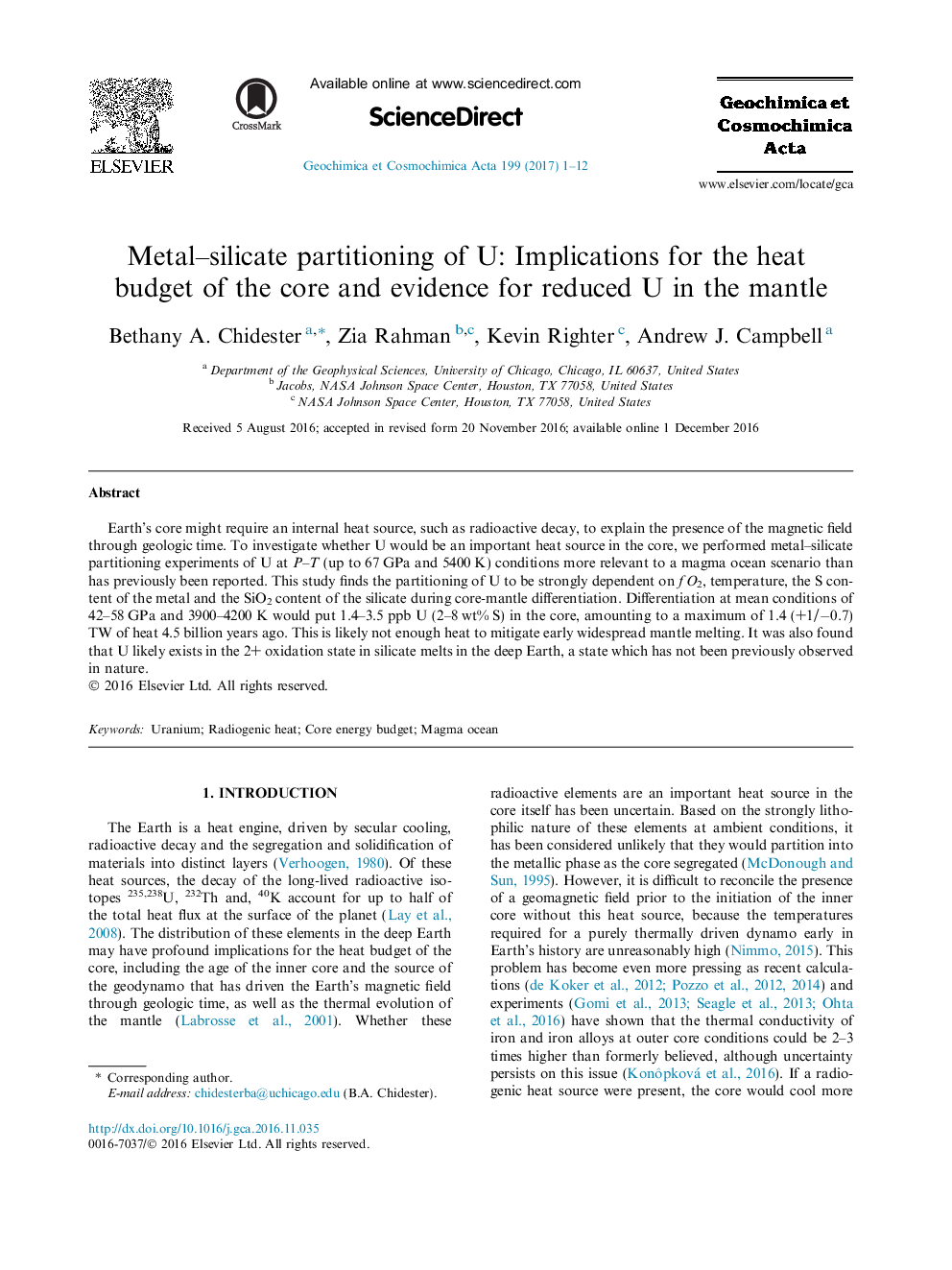| Article ID | Journal | Published Year | Pages | File Type |
|---|---|---|---|---|
| 5783358 | Geochimica et Cosmochimica Acta | 2017 | 12 Pages |
Earth’s core might require an internal heat source, such as radioactive decay, to explain the presence of the magnetic field through geologic time. To investigate whether U would be an important heat source in the core, we performed metal–silicate partitioning experiments of U at P–T (up to 67 GPa and 5400 K) conditions more relevant to a magma ocean scenario than has previously been reported. This study finds the partitioning of U to be strongly dependent on ƒO2, temperature, the S content of the metal and the SiO2 content of the silicate during core-mantle differentiation. Differentiation at mean conditions of 42–58 GPa and 3900–4200 K would put 1.4–3.5 ppb U (2–8 wt% S) in the core, amounting to a maximum of 1.4 (+1/−0.7) TW of heat 4.5 billion years ago. This is likely not enough heat to mitigate early widespread mantle melting. It was also found that U likely exists in the 2+ oxidation state in silicate melts in the deep Earth, a state which has not been previously observed in nature.
